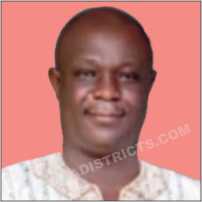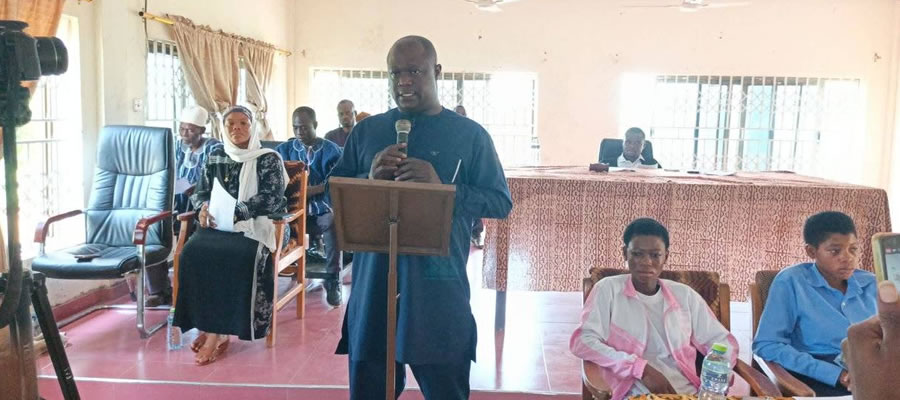

Governance
Good governance is dependent upon the efficient and decentralized management of public policy in which people are empowered to participate and influence the process of poverty reduction and the sustained growth of the economy. It requires legal, regulatory and institutional frameworks, which promote and sustain the accountability of government business and government machinery by the public at large and civil society organizations.
The focus of this section is thus to examine the institutional framework of the District Assembly and the problems inherent in the structure. It also looks at the current relationship between the Assembly and Civil Society Organizations in the District in the quest for good governance. Finally, it assesses the capacity of the security agencies and the judiciary system of the District.
The Daffiama-Bussie-Issa District Assembly was established in 2012 under the Local Government Act 462 of 1993, Legislative Instrument (LI 2100). The Assembly is empowered as the highest political and administrative body in the District charged with the responsibility of facilitating the implementation of national policies. Under section 10 of the Local Government Act 1993 (Act 462), the Assembly exercises deliberative, legislative and executive functions in the District. By this Act, the Assembly is responsible for the overall development of the District by way of the preparation of development plans and budget related to the approved plans.
Institutional System of the District Assembly
In line with the Local Government Act 1993 (Act 462), the District Assembly is composed of the District Chief Executive, the Member of Parliament and Assembly members. There is a total of twenty three (23) Assembly Members including one Member of Parliament and one District Chief Executive. Out of which, two are females (one elected and the other appointed) while twenty one are males. The breakdown is as follows:
Elected Members - 15
Government Appointees - 6
Member of Parliament - 1
District Chief Executive - 1
Total - 23
Excluding the government appointees of the Assembly, 70% of the members are elected from the various electoral areas in the district by universal adult suffrage and the remaining 30% appointed by government in consultation with the traditional leaders and interest groups in the District. The Presiding Member is elected by two-third of its members in line with the Local Government Act, 1993 (Act 462).
The current District Chief Executive is a government appointee and was approved by 100% of the Members of the Assembly in (4th May, 2017). The Assembly Members are charged to maintain close contact with their electoral areas by consulting the electorates on issues to be discussed in the District Assembly and to transmit these views, opinions and proposals to the District Assembly. They are expected to take part and help to organize development activities in the District and also maintain frequent liaison with organized production and economic groupings in the district.
It could be observed that the District Assembly Members have the key responsibility of actually getting to the grassroots. However, some of the members are not able to organize fora or contact their electorates to unearth issues confronting them. Worse still, some assembly members do not attend assembly meetings regularly to present the problems of their electorates before the assembly. This behaviour has affected prioritization of community development needs by the District Assembly since the voices of the people are not heard.
There are three Area Councils in the district, which provide the Executive Committee of the District Assembly with development problems to be deliberated upon for possible solutions to be initiated. The Executive Committee headed by the District Chief Executive performs executive and coordinating functions. It confers and collaborates with the sector agencies, District departments, NGOs and other civil society organisations for solutions to problems in an integrated manner. Unfortunately the Area Councils are not living up to expectation.
This is attributed to the low revenue base of the District Assembly that makes it difficult to remunerate the Area Council staff members who as a result have shed their responsibility of serving their own people. There are two committees of the Assembly: the Public Relations and complaints committee headed by the Hon. Presiding Member and the Executive Committee which is chaired by the District Chief Executive. The Executive Committee has seven (7) Sub committees as listed below:
8. Finance and Administration Sub-committee
9. Social Services Sub-committee
10. Agricultural Sub-committee
11. Education Sub-committee
12. Economic Development Sub-committee
13. Work Sub-committee
14. Justice and Security Sub-committee
The Executive Committee operates through its various Sub-Committees with the District Coordinating Director (DCD) coordinating the activities of all these Sub-Committees. These Sub-Committees collate, deliberate and synthesize the development problems and priorities and other relevant issues in their area of operation and submit recommendations to the Executive Committee. The frequency of the Executive Committee meetings is not encouraging. This attitude has often delayed the decision making and implementation of programmes that are critical to the development of the District.
Administrative System of the District Assembly
The successful implementation of programs and projects at the local level to an extent depends on the administrative system of the district. The existence of these systems facilitates access to information and decision making at the district level. As a newly created district, only few of these departments currently operate in the district and a good number of the departments still operates from the mother district which in no doubt affects the smooth implementation of planned programs and projects in the district. This is further presented in the table 1.9.1 below.
District Planning coordinating Unit(DPCU) Capacities and Management
The main aim of this step is to assess the capacities and condition of the DPCU in developing and implementing the DMTDP. It also tries to find out if requisite funds, human and material resources would be available for the implementation of the DMTDP. This will inform the District to put in place appropriate incentives, material and human resource for smooth implementation, monitoring and evaluation of the DMTDP. Below is a table showing the capacities and Management of the District.
Traditional Authority
The traditional authority setup plays a vital role in ensuring good governance in the district. With the DBI District being a typical rural one, the role of the chieftaincy institution in matters related to land, conflict resolution, revenue mobilization and the maintenance of law and order is far overriding. The Daffiama-Bussie-Issa District has three (3) paramountcies: the Daffiama Traditional Area, Bussie Traditional Area and the Issa Traditional Area.
Solutions to the capacity constraints identified
The gap identified in staff qualification could easily be addressed through on-the-job training, using workshops, seminars and pursuit of top-up courses in appropriate institutions by staff. There should be proper staff development plan to fill-in these staff qualifications gaps. The planning, implementation and the financial aspects should be collaboration among the staff in question, the District Assembly and Central Government.
Also the full complement of staff can be achieved when government makes conscious efforts to create and staff these offices. Typical examples of such offices in the DBIDA include a physical planning officer. This is feasible in the short term when clearance is issued to Local Government Service to recruit professionals.
Additionally, the skills and knowledge gap in the district could be quite worrisome, given that the score is only 5.5. This, however, could be filled through frequent training workshops and seminars including short certificate courses in the appropriate institutions. For example, there should be a series of courses targeted at M&E system as a whole with special emphasis on indicator development, budgeting, financial tracking, M&E data analysis, reporting among others.
Moreover, the constraint of availability of funds scores is 5.3. This has a dire consequence for plan preparation and consequent repercussion of the success of the entire plan. It is therefore proffered that government takes the necessary steps to address this anomaly by making special arrangements for financial planning activities and also adhering to already existing ones.
In connection with the misappropriation of funds cited in the assessment, leadership should make it a point to stick to expenditure plans and patterns as contained in the plans and annual budgets so as to minimise, if not completely eliminate the menace.
Further, a critical look should be taken at timely release of funds by government and a conscious effort be made to address this challenge as the problem goes beyond the powers of the District Assembly. The delay actually starts from the national level and manifests at the District level. Factors that result in these delays should be identified and resolved at the national level so as to ensure timely release of these funds to the District.
As regards overtime and incentives and motivation, government should take a second look at incentives and motivational packages to help boost the morale of staff in the District. Overtime work could also be solved by early start of most the work initiated from the national level usually dependent on timely release of funds.
Date Created : 4/9/2018 7:30:08 AM











 facebook
facebook
 twitter
twitter
 Youtube
Youtube
 +233 593 831 280
+233 593 831 280 0800 430 430
0800 430 430 GPS: GE-231-4383
GPS: GE-231-4383 info@ghanadistricts.com
info@ghanadistricts.com Box GP1044, Accra, Ghana
Box GP1044, Accra, Ghana